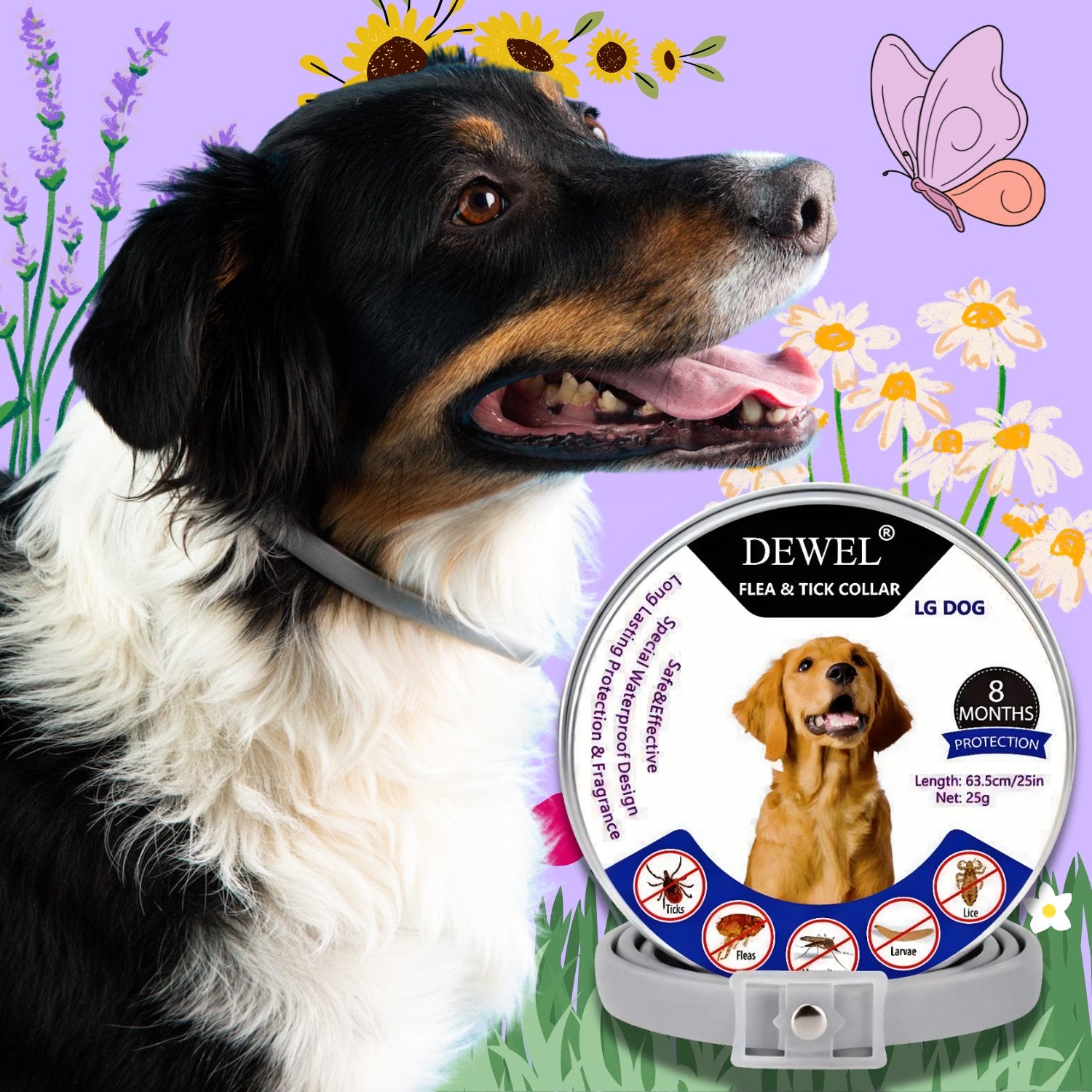
What Can You Feed a Dog to Repel Fleas?
Abdelhak HachtShare
Table of Contents
Fleas can be a persistent nuisance for both dogs and their owners. While there are various flea control products available, some dog owners prefer natural and holistic methods to help repel these pesky parasites. One such approach is to feed your dog certain foods that may act as natural flea repellents. In this comprehensive guide, we'll explore what you can feed your dog to repel fleas naturally.
Understanding Fleas

Before diving into natural flea-repelling foods, it's essential to understand the enemy: fleas. Fleas are small, blood-sucking parasites that infest our beloved pets. They not only cause discomfort through itching and skin irritation but can also transmit diseases.
Fleas have a life cycle that includes egg, larva, pupa, and adult stages. The adult fleas live on your dog, feeding on their blood, and laying eggs that eventually fall off into your home environment. These eggs hatch into larvae, which then transform into pupae before emerging as new adult fleas. This life cycle makes it crucial to target not only the adult fleas on your dog but also their environment to fully repel and eliminate these pests.
Feeding Your Dog to Repel Fleas

While there's no single magic food that will entirely repel fleas, you can incorporate certain ingredients into your dog's diet to help create an environment that's less hospitable to these parasites. Here are some natural flea-repelling foods you can consider:
-
Garlic: Garlic is one of the most well-known natural flea repellents for dogs. It contains a compound called allicin, which is believed to help repel fleas. Feeding your dog small amounts of garlic can potentially make their skin less appealing to fleas.
Important Note: While garlic can be beneficial, it's essential to use it in moderation. Consult your veterinarian for guidance on the appropriate amount for your dog's size and breed, as excessive consumption can be harmful. - Brewer's Yeast: Brewer's yeast is another food item that is thought to help repel fleas. It contains thiamine (vitamin B1), which, when metabolized, produces an odor that is undetectable to humans but unpleasant for fleas. You can find brewer's yeast supplements or powders made specifically for dogs at pet stores.
- Apple Cider Vinegar: Apple cider vinegar is known for its various health benefits, and some dog owners believe it can help repel fleas. A small amount can be added to your dog's water bowl or mixed with their food. The theory is that the slightly acidic pH of the vinegar may deter fleas from your dog.
- Carrots: Carrots are rich in vitamin A, which is essential for maintaining healthy skin and a strong immune system. Healthy skin can be a natural defense against fleas. Feeding your dog raw, sliced carrots can be a healthy addition to their diet.
- Lean Proteins: High-quality, lean proteins like chicken and fish can support your dog's overall health. A balanced diet helps your dog maintain healthy skin and fur, making them less susceptible to flea infestations.
- Herbs: Certain herbs like rosemary, basil, and mint are believed to have flea-repelling properties. You can mix finely chopped fresh herbs into your dog's food or create herbal teas, letting them cool before adding to your dog's water bowl.
- Essential Fatty Acids: Omega-3 and Omega-6 fatty acids, found in foods like salmon and flaxseed, can help maintain your dog's healthy skin and coat. A healthy coat can act as a natural barrier against fleas.
Additional Tips
- Consult Your Veterinarian: Before making any significant dietary changes for your dog, it's crucial to consult with your veterinarian. They can provide guidance on the best approach for your dog's specific needs, including the right amounts of these flea-repelling foods.
- Flea Control Regimen: Feeding your dog flea-repelling foods should be part of a more comprehensive flea control regimen. Regular grooming, maintaining a clean living environment, and using other flea prevention methods are equally important.
- Monitor Your Dog: Keep a close eye on your dog after introducing new foods into their diet. Watch for any adverse reactions or allergies. If you notice any unusual symptoms, consult your veterinarian.
Conclusion
Feeding your dog certain foods with flea-repelling properties can be a part of your holistic approach to flea control. While there's no one-size-fits-all solution, incorporating these natural ingredients into your dog's diet may help create a less hospitable environment for fleas. However, always consult your veterinarian for guidance and ensure a comprehensive flea control plan is in place to protect your beloved pet effectively.








